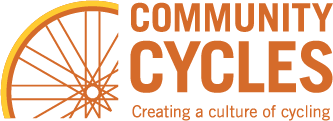Dear TAB and Staff,
Thank you for Staff’s detailed response to our suggestions for ways to improve the safety and efficiency of the proposed design for expanded facilities on north 28th St. However, we were disappointed that our suggestions were largely rejected, leaving the project as currently proposed inconsistent with the city’s TMP goals, Vision Zero plan, Climate Action goals, and Racial Equity Plan.
We are also disappointed in the level of analysis done in response to our suggested improvements to the design. All the comments seemed to be based on current levels of walking and biking, which are extremely low because facilities are nonexistent or inadequate. Part of the objective of this project, we would hope, is to improve mobility for non-auto modes, resulting in significantly increased ped and bike traffic, as well as increased bike speeds with more appropriate infrastructure. Staff’s analysis seemed to include no recognition of changed traffic levels, which are one of the very objectives of the project.
We also categorically reject the notion that this project will, despite increasing capacity, reduce VMT. The city’s own data show that although we have improved transit significantly since 1990, overall VMT has increased from 2.19 million miles/day to 2.49 million miles/day. The only steps that will reduce VMT are reductions in capacity, either of roadways or parking. This proposed design will move us in the wrong direction on our VMT reduction goal.
Our primary objection to the proposed design is the reliance on sidepaths as a primary bicycle facility. The dangers of sidepaths are well-known and well-documented. With its many driveway and street crossings, the sidepaths for 28th St. will be all too similar to the notorious Broadway path along Table Mesa Shopping Center, which Transportation staff have agreed is an unsafe and regrettable design. Even AASHTO recommends against the use of sidepaths in the Guide for the Development of Bicycle Facilities, 4th Edition, 2012. We include here the most relevant of the Guide’s extensive list of concerns about sidepaths (from section 5.2.2):
Paths can function along highways for short sections, or for longer sections where there are few street and/or driveway crossings, given appropriate separation between facilities and attention to reducing crashes at junctions. However before committing to this option for longer distances on urban and suburban streets with many driveways and street crossings, practitioners should be aware that two-way sidepaths can create operational concerns…. These conflicts include:
1. At intersections and driveways, motorists entering or crossing the roadway often will not notice bicyclists approaching from their right, as they do not expect wheeled traffic from this direction. Motorists turning from the roadway onto the cross street may likewise fail to notice bicyclists (and pedestrians) traveling the opposite direction from the norm.
2. Bicyclists traveling on sidepaths are apt to cross intersections and driveways at unexpected speeds (i.e., speeds that are significantly faster than pedestrian speeds). This may increase the likelihood of crashes, especially where sight distance is limited.
3. Motorists waiting to enter the roadway from a driveway or side street may block the side-path crossing, as drivers pull forward to get an unobstructed view of traffic (this is the case at many sidewalk crossings, as well).
…
11. Bicyclists using a sidepath can only make a pedestrian-style left turn, which generally involves yielding to cross traffic twice instead of only once, and thus induces unnecessary delay.
12. Bicyclists on the sidepath, even those going in the same direction, are not within the normal scanning area of drivers turning right or left from the adjacent roadway into a side road or driveway.
Our suggestions are attempts to mitigate the dangers of this inherently dangerous design. That Staff should not just continue to advocate for this design, but largely dismiss measures to improve its safety, is deeply disappointing. Even when the proposed design last came before the public in 1998, nearly a quarter century ago, it was mediocre at best. Viewed from today’s understanding of best transportation design practice, it is thoroughly retrograde.
To reiterate, our suggested design would include an 8’ sidewalk, fully protected bike lanes, and center-running transit. This would be a design that is consistent with City goals and policies, and reflective of current best practice. We strongly urge TAB to reject Staff’s proposal and request that Council direct a ground-up rethinking of this project.
Thank you.
Community Cycles Advocacy Committee

